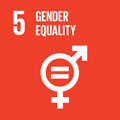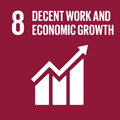- Docente: Catherine Farwell
- Credits: 5
- Language: English
- Teaching Mode: In-person learning (entirely or partially)
- Campus: Forli
- Corso: Second cycle degree programme (LM) in Specialized translation (cod. 9174)
Learning outcomes
The student knows the strategies, techniques, traditional and state-of-the-art tools and methods used in specialized translation tasks; s/he is able to apply them to the translation of technical and scientific texts from different genres and text types, from Italian into English, meeting specific translation briefs and respecting the communicative functions of the source texts; s/he knows the basic techniques required for information mining, drafting, editing and revising texts, including the overall quality evaluation of the translated text.
Course contents
The course guides the graduate student to a level of higher-quality output, focusing on the translation and revision of specialized Italian-language texts taken from fields of company documents, academic, corporate law, marketing and small business fields. Both public/institutional and private-sector contexts will be examined.
The aim of the course is to allow students to deal with texts in any specialistic field and to produce translations in English that an expert reader will evaluate as being accurate and authentic; students will be asked to apply the knowledge acquired during their undergraduate courses (linguistic, practical and translation notions) when translating and revising texts. Special attention will be paid to the key steps of translation practice in the specialized field: identification and analysis of context, genre and discourse features of the source text, the collection of reliable reference documents, selection of relevant terminology and the development of ad-hoc translation resources.
Particular importance will also be placed on speed of translation.
Course duration: 40 hours
Readings/Bibliography
Balboni, P. 2000. Le microlingue scientifico-professionali. Natura e insegnamento. Torino: UTET.
Bhatia, V. 1993. Analysing genre: language use in professional settings. Harlow: Longman.
Byrne, J. 2006. Technical Translation: Usability Strategies for Translating Technical Documentation. Dordrecht: Springer.
Cortelazzo, M. 1994. Lingue speciali. La dimensione verticale. Padova: Unipress.
Cortese, G. (ed.) 1996. Tradurre i linguaggi settoriali. Torino: Cortina.
Cosmai, D. 2007. Tradurre per l'Unione Europea (2 ed.). Milano: Hoepli.
Mossop, B. 2007. Revising and Editing for Translators (2 ed.). Manchester: St. Jerome.
Scarpa, F. 2008. La Traduzione Specializzata (2 ed.). Milano: Hoepli.
Tosi, A. (ed.) 2013. The EU multilingual translation in an ecology of language perspective. International Journal of Applied Linguistics (Special Edition), 23:1.
Zanettin, F. 2012. Translation driven-corpora: corpus resources for descriptive and applied translation studies. Manchester: St. Jerome.
Teaching methods
Instruction management note: All course participants are guaranteed a seat for in-person lessons.
Lessons in this course are carried out in a combined lab-lecture mode, in-person or online, with theoretical explanations by the instructor and the use of power point slides.
Covid prevention note: Given that SpecTra includes lectures and classes in IT laboratories, it is obligatory for instructors to inform their students about the following obligation:
“As concerns the teaching methods of this course unit, all students must attend [https://www.unibo.it/en/services-and-opportunities/health-and-assistance/health-and-safety/online-course-on-health-and-safety-in-study-and-internship-areas] Modules 1, 2”.
Students actively participate in lessons to contextualize the materials being analyzed and translated; the correction of translations and revision/discussion of translation options guides students and stimulates debate among peers.
Lessons taking place at the DitLab feature a PC for each student, equipped with computer-aided-translation software and an Internet connection. Student work can be individual, or guided as work in pairs/in small groups.
Attendance of at least 70% of lessons is obligatory for all students.
Assessment methods
Students will be evaluated on whether they have acquired specialized translation techniques and are able to manage terminology and complex contents. Mastery of the correct register for the text at hand as well as the correct morpho-syntactic elements of the target language will be included in the instructor’s mark for the course. The course evaluation consists in: a Final Written Exam devised to simulate the authentic work conditions of a free-lance translator in a specialized field. A Mid-Term Mock test (individual evaluation – will not influence final course mark) will be offered.
Students’ course grade for the IT>EN component will be calculated as follows:
Final Exam – represents 100% of grade for this 5 CFU component.
The Final Exam of this component will consist in the translation of a specialized text of about 250 words in 2 h, similar to those analyzed during lessons in terms of topic and text typology. Students may use the instruments at their disposal during lessons, as well as the resources they have created or procured during the course. The use of dictionaries, glossaries and documents available on the Internet will furthermore be permitted during the final exam.
EVALUATION SCALE: Student Learning Outcomes
SPECIALIZED TRANSLATION: IT>EN
30-30L Excellent level. The candidate possesses excellent translation/language skills, with a very high level of competence in the target language /(or) in the language and culture being studied.
27-29 Above-average level. The candidate makes only minor errors, and demonstrates a solid command of the required skills and competences.
24– 26 Generally sound level. The candidate displays a number of shortcomings, indicating a reasonable command of the required skills and competences.
21-23 Adequate level. The candidate displays significant shortcomings and only an adequate command of the required skills and competences.
18– 20 Minimum level. The candidate only meets the minimum level required and shows a minimal command of the required skills and competences.
< 18 Fail The candidate’s skills do not meet the required standard and reveal a wholly inadequate command of the required skills and competences.
...........................................................................................
A Mid-Term Mock translation will also be offered, the results of which will have no bearing on students’ final course grade; the aim of this facsimile exercise is to provide useful practice for the final course exam without the pressure of binding marks. Students will receive some individual feedback on their mock tests during the final lesson of the semester, before the start of Winter Break.
Characteristics of the Mid-Term Mock translation: a specialized text of about 200 words, to be translated in 80 minutes. The source text will be similar to those analyzed during lessons in terms of topic and text typology. Students may use the instruments at their disposal during lessons, as well as the resources they have created or procured up to that point in the course. The use of dictionaries, glossaries and documents available on the Internet will furthermore be permitted during the Mid-term Mock translation.
Students’ final mark for the overall Specialized Translation Course (10 CFU) is the average of the following two grades: their final mark for the ‘Specialized Translation component from English into Italian’ (50%) and their final mark for the ‘Specialized Translation component from Italian into English’ (50%).
Teaching tools
In the DitLab in Forlì:
Networked PCs with Internet access, CAT programs and corpus analysis programs, online dictionaries, terminological search tools, a video projector for the instructor's presentations.
Online and in the DitLab: Teaching materials (slides, worksheets, translation materials) are available through the Moodle e-learning page.
Office hours
See the website of Catherine Farwell
SDGs




This teaching activity contributes to the achievement of the Sustainable Development Goals of the UN 2030 Agenda.
